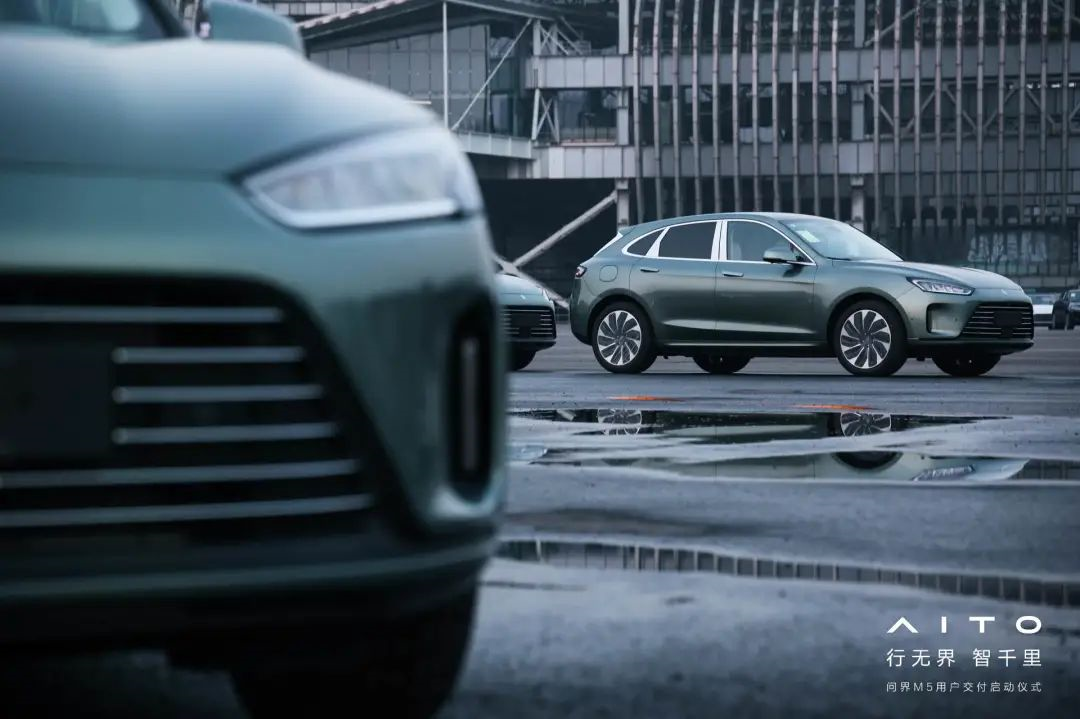Author: Zheng Wen
Editor: Zhou Changxian
Is there anyone who would not mention the car infotainment system when discussing a new car in 2022?
In recent years, many car manufacturers have already emphasized the importance of intelligent infotainment systems when releasing new cars. Therefore, intelligent voice recognition, intelligent apps, in-car maps and other features have been continuously strengthened. The increasing intelligence of cars has become a consensus among consumers.
The evolution of the infotainment system has a obvious trajectory. First of all, the changes must be visible. Since Tesla put a huge screen in the center console, the screens inside the car cabin have tended to be large and numerous. It seems that such features are necessary to reflect the intelligence and technology. At the same time, the computing power of in-car chips continues to expand.
However, most problems such as “few applications, slow upgrades, and poor experience” in the infotainment system have not been eliminated. Although it looks very technological, the actual use is not satisfactory and is very different from the experience of using mobile phones and tablets.
For example: when using voice interaction, the environment noise tolerance cannot be large, coupled with imperfect Mandarin, it often makes people extremely angry like talking to “artificial intelligence with disabilities”. The car navigation map is displayed on the huge car screen, but you still use your phone for navigation.
If you let a technology media person to test the car infotainment system, there must be a big doubt: Why is it so difficult to use functions that are common on mobile phones on the infotainment system? The OTA upgrade that has long been a normal operation on the mobile phone has evolved into various FOTA and SOTA upgrades in the infotainment system, which is confusing.
Of course, not all car manufacturers have poor performance on the infotainment system. Some new car makers have performed well in the infotainment system. Long-term continuous dialogue, visible and audible speech, intelligent recognition of four-tone zones and other functions have significantly improved the interactive experience. Pioneering companies like XPeng Motors and Li Auto have done quite well in this regard.
After the appearance of the Huawei Hongmeng system cockpit, the infotainment system has taken another big step forward.
Recently, when the AITO M5 was delivered in multiple cities at the same time, the “AutocarMax/Travel Hundred-People Conference” went to experience this car. The newly launched Hongmeng cockpit in the car really surprised people.
Hongmeng “Complete Form”
First of all, let’s explain some background information.
On December 23, 2021, Chongqing Jinkang Sailisi, a subsidiary of Xiaokang Group, released a high-end smart car brand that cooperated with Huawei called AITO. The M5 is the first model under the AITO brand and was officially delivered in March this year.
At the launch of the M5, due to many of the amazing statements made by the CEO of Huawei’s Intelligent Automotive Solution BU, Yu Chengdong, there was a lot of hype around it. From the actual car, the M5 was still very practical, fully considering its practicality and adopting range-extending power, with WLTC working conditions reaching 1100+ kilometers, and it did not have Huawei’s automatic driving system.# And we’re talking about the 15.6-inch smart control screen inside the cabin, which is exactly where the new HarmonyOS smart cockpit is housed.
Previously, people’s direct experience with the Hongmeng system came from Huawei phones. If your Huawei phone has been upgraded to HarmonyOS, you will see that the original Android system name has been replaced by Hongmeng OS, but compared to the original system, there is no significant change in the phone UI interface.
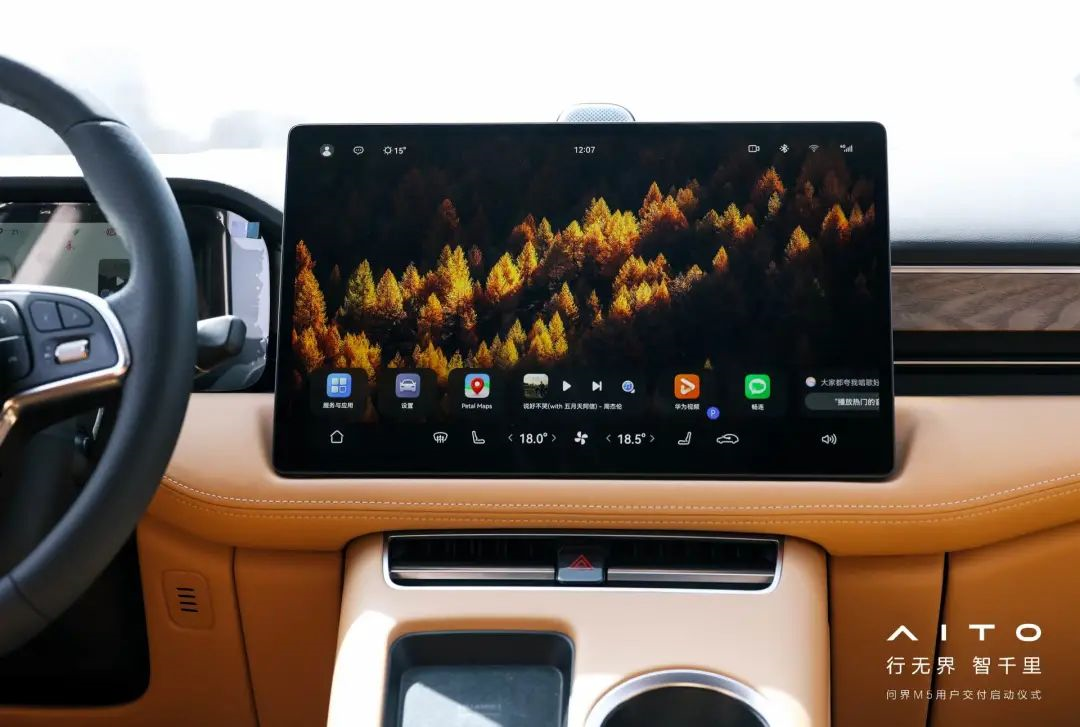
However, when Hongmeng system is loaded on the vehicle, the change in the user experience is very noticeable. The control screen is like a Huawei Matebook, and its UI interaction is very simple and easy to use.
Large-area visual interaction allows most settings and information to be accessed directly in one step, achieving zero-level operation. All functions can be reached through a maximum of two-level menus. The drop-down menu bar is a control button for frequent use in car control, the pull-up menu is the air conditioning control area, the left side of the main interface is the service and application center, and the right side is your frequently used application.
The personalized quick access bar Smart Dock service card below the desktop can not only be adjusted according to personal preferences, but also analyze comprehensively based on road conditions, driver status, vehicle condition, etc., actively recommend content, safety reminders, and convenient services.
During the operation, the obvious feeling is that the interaction experience is very smooth, and the operation is quite smooth, with a very high degree of matching between 3D animation and touch. The operation response is smooth and the interface switching is smooth. The performance in terms of frame loss rate and response delay is very excellent. The usage experience is similar to that of mobile phones and tablet computers, and it can be full screen, split screen, or floating window.
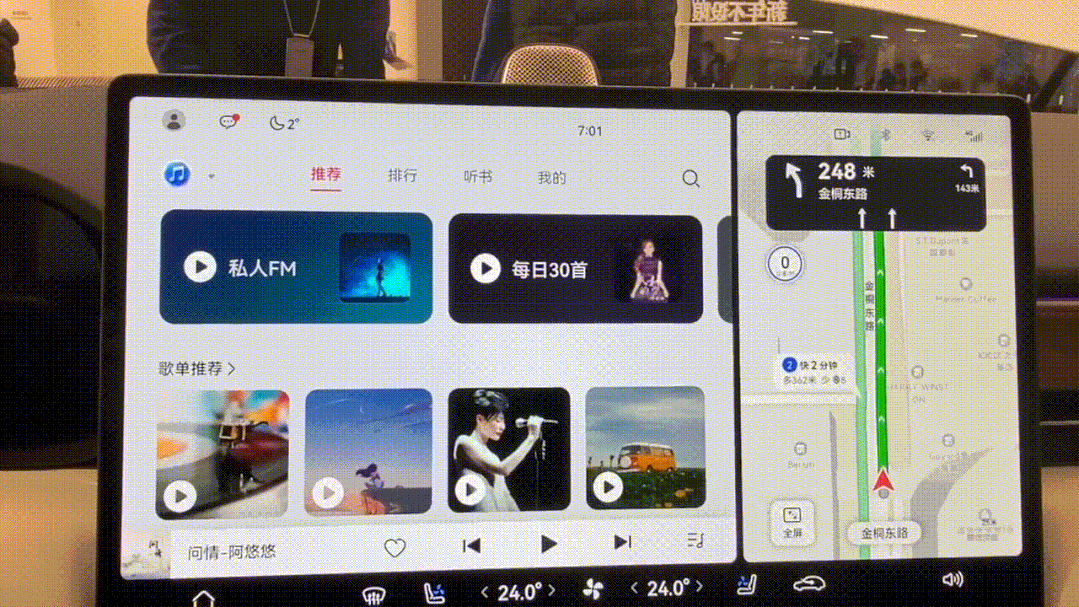
At present, voice interaction is the most convenient form of interaction when driving. In the mass-produced model of Wuzhe Jie M5, functions such as continuous conversation for a long time (60 seconds), visible and speakable, and intelligent recognition in four sound zones have also been realized in the Hongmeng cockpit, with good results.
There is also a feature with the Hongmeng logo called “Seamless Circulation”. For example, if you are using Huawei’s Petal Maps navigation on your phone, it will automatically transfer to the car after getting in the car and back to the phone after getting off the car.
Hongmeng system also supports smooth communication. When you enter the car, as long as it is under the same Huawei account status, it can be automatically transferred from the phone to the car machine, and call the microphone and speaker devices in the car, allowing you to directly switch to the scene inside the car.If the phone is not a HarmonyOS system, Huawei has also developed phone projection function. By downloading the APP, all Android phones in the ecological environment can be projected onto the HarmonyOS car screen. Similar to Apple CarPlay and Baidu CarLife, but different from the latter two, which are unidirectional and have only a small number of applications from the phone to the car screen, it can project all apps on the phone to the car screen and realize bidirectional flow.
In addition, the split screen feature can be used to fix the navigation on the left side. Navigation voice can also be transmitted only to the driver’s seat through the main driver’s headrest speaker, while the co-driver can watch videos and use apps. This “flow” function has great imagination space in immersive experience and scene switching.
Compared with other automakers’ car systems, the rich application ecology is also an advantage of HarmonyOS. AITO M5 comes with a lot of pre-installed apps, including car maps, Huawei music, Huawei video, KuGou, Himalayas, Youku, etc. In the open HarmonyOS ecology, more applications will continue to be added in the future. Compared with automakers who need to negotiate with third parties one by one for each application, Huawei has a natural advantage.
In terms of security, privacy permissions can be set in the operating system. By the way, the HarmonyOS kernel is the first domestic operating system kernel that meets the ASIL-D functional safety, which represents that Huawei has truly stepped into the threshold of product-level functional safety.
After experiencing it, I believe that the HarmonyOS cockpit is the initial “complete” form of HarmonyOS.
It is no wonder that Ren Zhengfei repeatedly emphasized that the HarmonyOS operating system is not designed for mobile phones as people imagine, and that developing this system is not to replace Google but mainly for end-to-end processing.
Why can it do this?
Why is it so difficult for automakers to break through for so many years, but it seems so easy after the arrival of HarmonyOS? Why did the always unsmooth and unintelligent car system suddenly become silky smooth?
According to official introduction, the smoothness is because HarmonyOS smart cockpit uses intelligent background control and memory allocation VIP scheduling scheme. Voice car control also uses Huawei’s self-developed leading edge-cloud combination architecture for the first time, and gives full play to the advantages of low delay on the end side and large model and entity on the cloud side, providing users with more natural, smooth, fast and accurate voice interaction experience.
However, the above rhetoric cannot systematically explain why the HarmonyOS system is so excellent.
We still need to go back to the release of HarmonyOS to find the answer. On August 9, 2019, Yu Chengdong called it the “first distributed OS with a microkernel oriented to the whole scene”.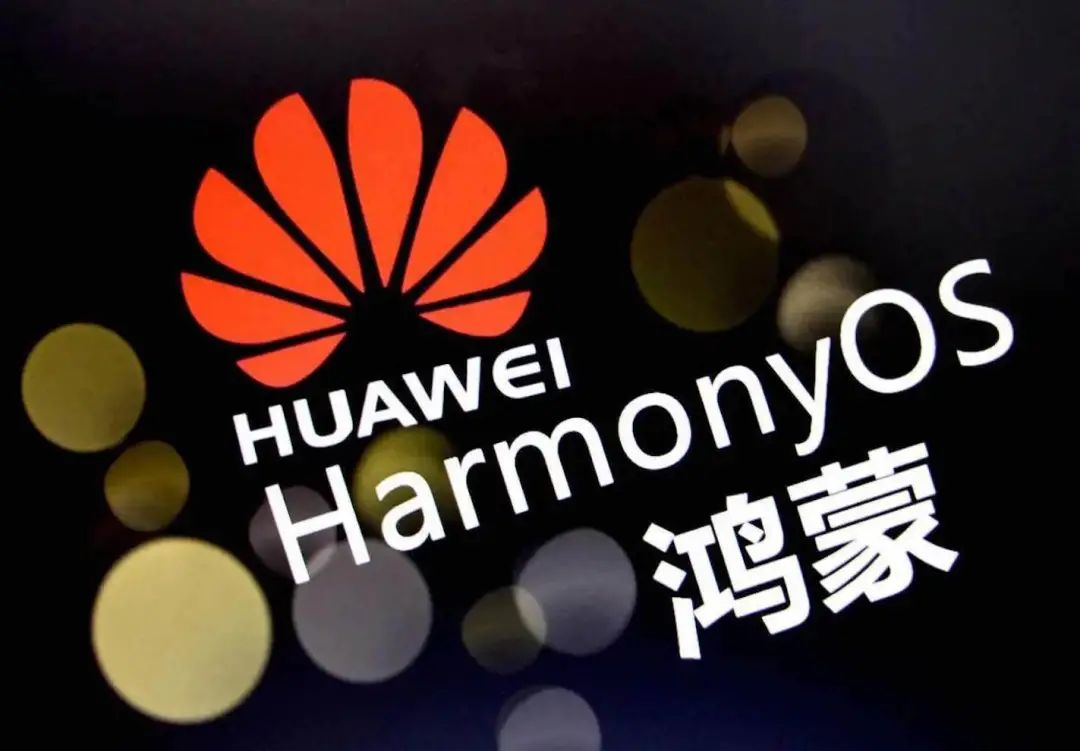
There is great potential in the “microkernel” concept. Compared to the macro-kernel architecture of previous versions of Android, this system based on a microkernel architecture has significant advantages.
The macro-kernel architecture places all system services, including file systems, device drivers, virtual memory management, and network protocol stacks, in the kernel. The kernel is implemented as a single large process and runs in a separate address space, directly calling functions between processes.
This approach is certainly simple and efficient, but as operating system functionality deepens, more and more things are added to the kernel, and a huge amount of macro-kernel code can hide potential vulnerabilities and result in poor system scalability. In short, if one thing goes wrong, everything crashes, and problems like card failure and application failure are more severe, especially in car systems.
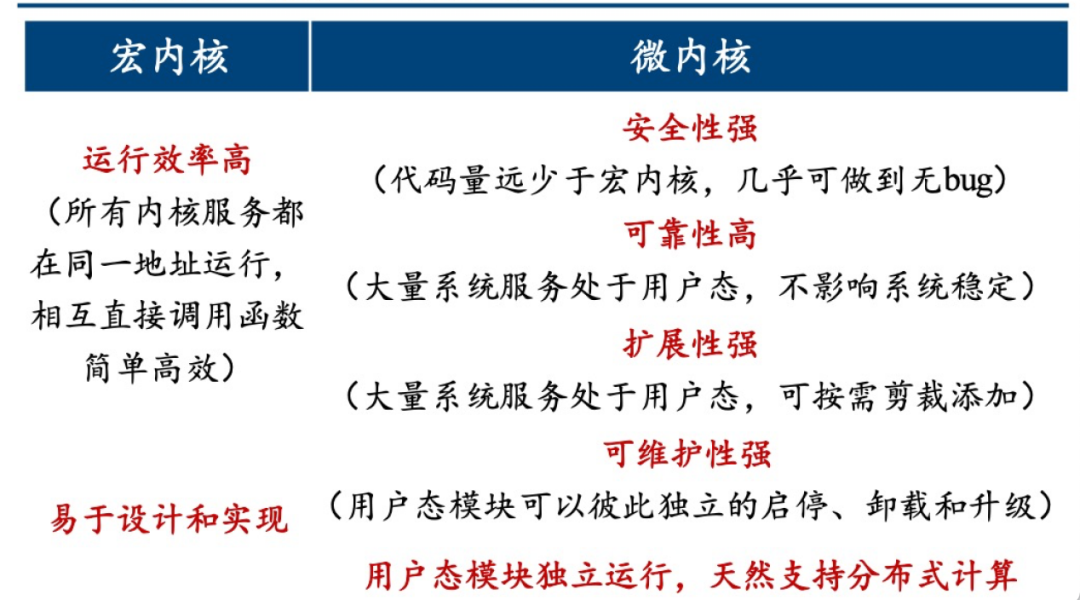
The microkernel is a good solution to this problem. As its name implies, the microkernel simplifies kernel functionality and only retains the most basic scheduling and memory management functions in the kernel. Drivers, file systems, and other functions are implemented in user space, and these functions are divided into independent processes that communicate with each other using Inter-Process Communication (IPC), so one service failure does not affect another.
This is what Huawei calls the “distributed” HarmonyOS. The three core capabilities of HarmonyOS are distributed software bus, distributed data management, and distributed security.
The distributed software bus makes HarmonyOS more fluid. Combined with Huawei’s “deterministic delay engine” technology, it further optimizes delay times. Before a task is executed, it assigns task execution priority and performs scheduling processing, guaranteeing priority scheduling for high-priority task resources, reducing application response delay by 25.7%.
The other two core capabilities of distributed data management can improve the performance of remote reading, writing, and retrieval of data across devices and platforms.
Yes, “high fluidity” is just one of the features brought about by the microkernel architecture. Unlike Google and Apple, which can only provide distributed applications for phones, or Microsoft, which can only provide distributed applications for computers, the huge advantage of HarmonyOS is its cross-platform “high collaboration”.
There are many communication methods between devices, which makes it difficult to ensure link fusion and sharing. However, HarmonyOS can achieve network abstraction and cross-device functionality without being restricted to device form factors.A developer of an app based on the HarmonyOS system stated that most existing systems have not truly connected various devices at the system level, but HarmonyOS does offer some new ideas and capabilities to achieve device interconnectivity from the system level, allowing developers to freely combine various devices’ hardware advantages.
“We chose to develop on HarmonyOS because we are in the business of home KTV, and the experience of the entire product is fragmented and not very good. After communicating with the Huawei HarmonyOS team, we were able to solve device interconnectivity at the system level.”
Lastly, the core feature of distributed security enhances the security performance of HarmonyOS. A product manager of a start-up company believes that HarmonyOS’s advantage lies in its secure connection, “It achieves chip-level encryption and software-level communication encryption, all in accordance with the latest industry standards.”
According to the Harmony “1+8+N” strategy, the PC, tablet, smart screen, smart speaker, AR/VR devices, smartwatch, car system, and headphones will be connected through a distributed bus and developed and sold by Huawei. The N peripherals (such as cameras, robot vacuums, and smart scales) involved in the five major scenarios of mobile office, smart home, sports health, audiovisual entertainment, and smart travel will be developed in collaboration with ecological partners. HarmonyOS will provide opensource operating systems, HiLink protocol standards, HiAI components, and other technological platforms.
This is an inspiring and ambitious vision.
However, it should be pointed out that HarmonyOS currently operates on dual frameworks and retains AOSP (Android Open Source Project) features. This is to quickly integrate into the current Android user base, with gradual decoupling from AOSP in future versions. Currently, due to the lack of a complete HarmonyOS application ecosystem, most applications are still based on the AOSP framework, and so HarmonyOS’s advantages of running on the microkernel bypassing virtual machines cannot be fully reflected in terms of speed.
This is also why industry insiders believe that the success of HarmonyOS mainly depends on whether the ecological scale can meet standards. Yang Haisong, Vice President of Huawei’s Consumer Business Department, stated that for an operating system, a 16% market share is a life-or-death threshold.
Overall, after experiencing the HarmonyOS cockpit of AITO Q&A M5 and understanding the technical background of the system, I vaguely understand what “everything for one, and one for everything” means.
What exactly is the state of interconnectedness? It is difficult to say. In fact, people’s vision of the future cannot escape the limitations of current technology and thinking.After five years, when we look back, perhaps the infotainment system will no longer be characterized by “lags” and “jitters”. These are merely our most superficial perceptions and cognition of the HarmonyOS ecosystem.
This article is a translation by ChatGPT of a Chinese report from 42HOW. If you have any questions about it, please email bd@42how.com.
